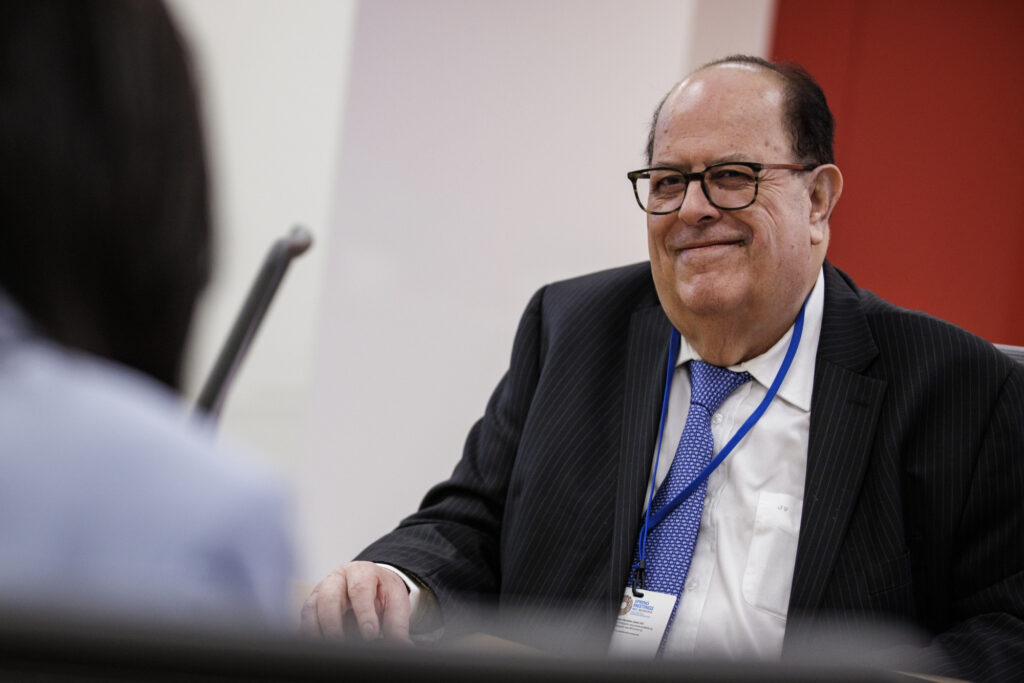Peru will exercise caution when it comes to cutting borrowing costs to avoid inflation flaring up again at a time of anaemic economic growth, the head of the country’s central bank, Julio Velarde, told LatinFinance.
“Inflation has come down. It had never been outside the target range for as long and we are going to be cautious with interest-rate easing so that we do not return to inflation,” Velarde said in an interview on the sidelines of the annual meeting of the World Bank and International Monetary Fund in Marrakech, Morocco.
Peru’s headline inflation rate was 5% annualized through September, with core inflation at 3.6%. The bank expects headline inflation to converge to the 1-3% target band early by April and forecasts it to end 2024 at 2.4% compared with 8.5% in 2022.
Slower inflation allowed the central bank to lower its benchmark interest rate by 25 basis points in October, the second consecutive monthly cut. The rate now stands at 7.25%.
Velarde said that while additional cuts are possible, it depends on whether a full-blown El Niño weather event materializes between late 2023 and early 2024.
Added to the mix is the country’s slowing economy, with GDP contracting by 1.3% in July from a year earlier. GDP fell by 0.5% annualized through July and the government forecasts growth at 1% for the year.
Private investment, which is fueled by the country’s large mining sector, is also falling. The bank forecasts a 5.4% decline in private investment this year, with mining investment down 20% so far in 2023 and trending lower. Peru is the world’s second-largest copper producer and one of the top 10 exporters for a number of metals, including gold and zinc.
POLITICAL TURBULENCE
A key drag on investment has been the country’s political turbulence. Peru has had seven presidents since 2016 and the election of Pedro Castillo in 2021 led to the most significant capital flight in half a century, according to the central bank.
Velarde called the capital hemorrhage “historic,” with the country losing more than $15 billion in 2021, equivalent to around 7.5% of GDP. Conditions stabilized somewhat in 2022, but Castillo attempted a power grab last December and was immediately impeached by congress. His VP, Dina Boluarte, took office and faced widespread protests that paralyzed much of the tourism sector and hurt other industries. Weather events in the first quarter of last year added to the malaise, particularly in the agriculture and fishing sectors.
Public investment was up nearly 7% in September from a year ago, offsetting some of the decline in the private sector.
Velarde said that while softer growth is a concern, keeping inflation in check is the critical point.
“Our focus is inflation, because having inflation with recession would be much worse. We believe that if inflation continues to drop, we will be able to lower interest rates,” he said.
Source : LatinFinance

